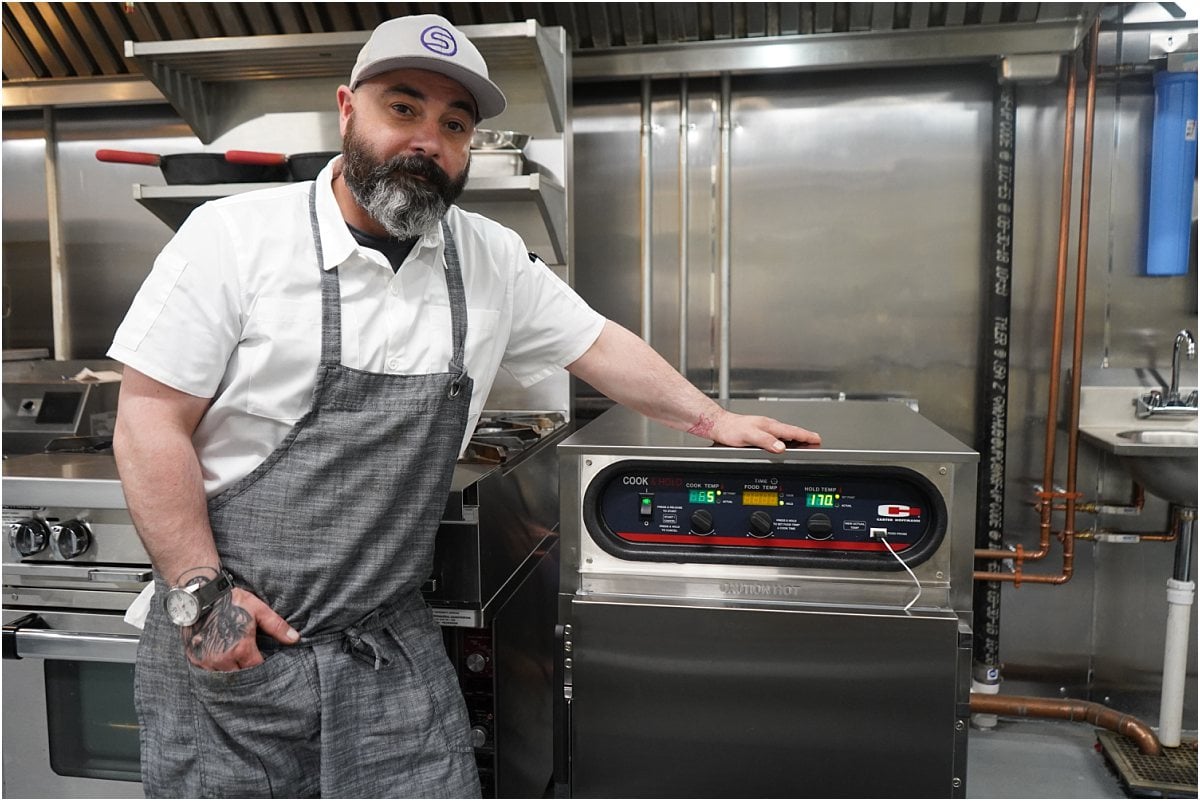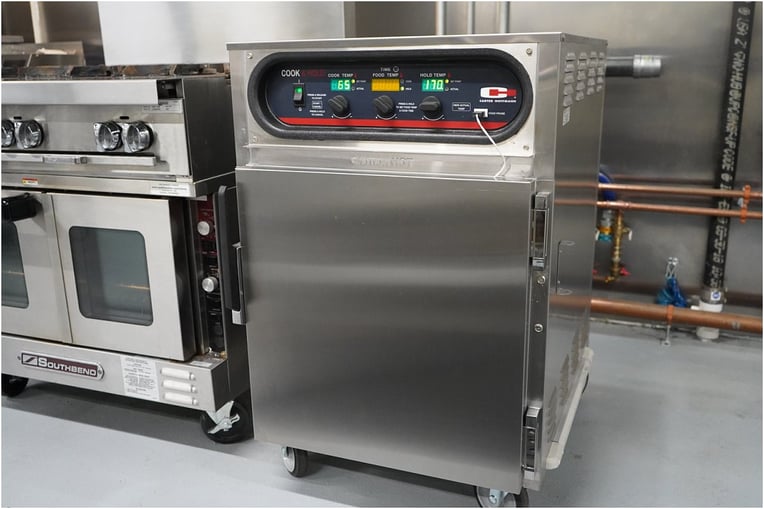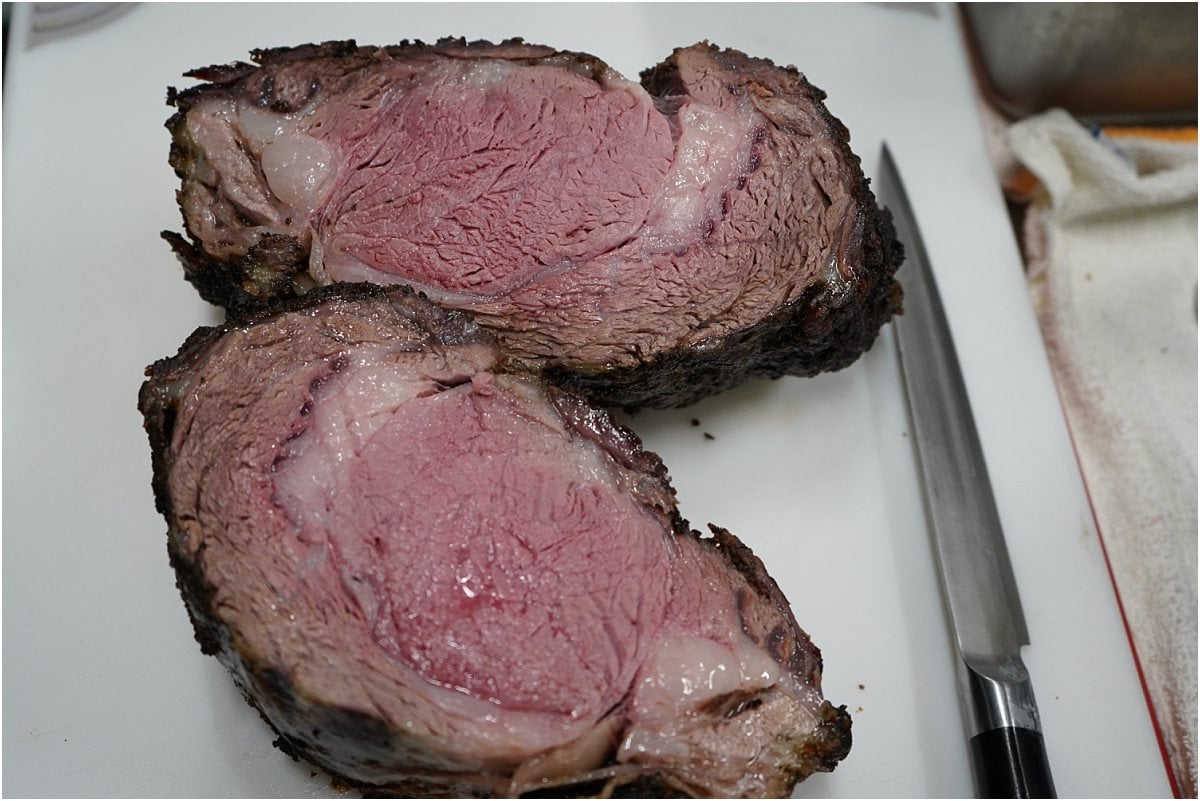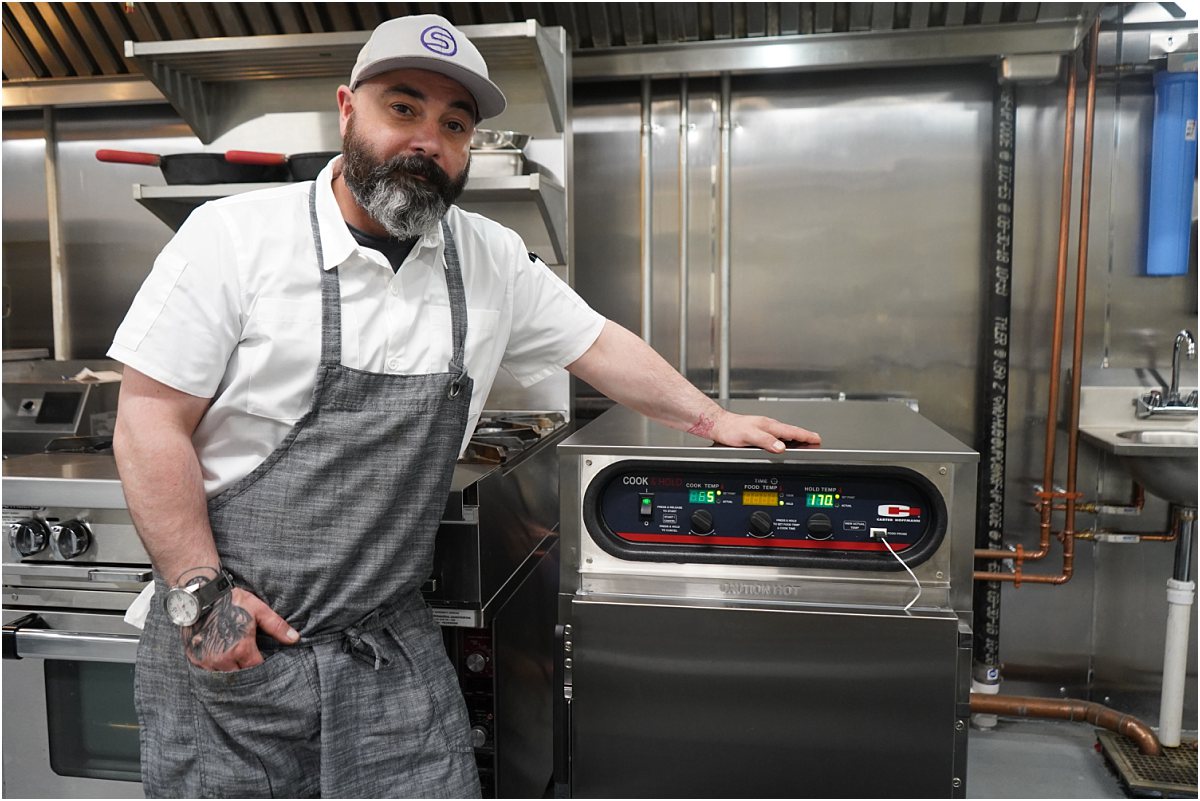
Whether you're opening a new restaurant or updating your existing commercial kitchen, it's important to invest in staple kitchen technology that can improve workflow, automate repetitive tasks, lower labor costs, and improve food safety. One such great technology for your commercial kitchen is with Cook and Hold technology.
A cook and hold oven cooks food relatively slowly and provides a holding cabinet for the finished product. The food is first cooked or roasted at a specific temperature for a set amount of time. Once the desired internal temperature is achieved, the oven automatically switches to a holding mode that keeps the product at the ideal safe temperature until it's ready for serving. This cooking method takes the guesswork out of timing different sized cooking batches and eliminates the need to check for doneness constantly and avoid overcooking. Capable of cooking, holding, and rethermalizing, a cook and hold oven will quickly become one of the most dynamic pieces of equipment in your kitchen.
What Can Cook and Hold Technology Do For Your Commercial Kitchen?
Offer Better Food Quality
Conventional ovens use harsh heat sources that are unable to maintain precise temperatures, resulting in inconsistent results. On the other hand, cook and hold units produce gentle, radiant heat that evenly surrounds food. You can hold food for more extended periods and at proper temperatures, which aids in the tenderization of meats while retaining their moisture and taste. We can all agree that meat tastes better when it is moist and not dried out. That's because a lot of the flavors are contained in the natural juices, and losing those juices degrades food quality.
Greater Food Yields
Meats cooked in standard ovens can shrink as much as 30%. But with a low-and-slow cooking method, they lose a lot fewer juices, thus experiencing minimal shrinkage. The exact shrinkage ratio will depend on the cut of meat, grade, trim, moisture content, degree of cooking doneness, etc. But typically, you can cut shrinkage from 25 to 30% down to 5 to 10%. Many types of meats are over 60% water with a large amount of fat. You can see why reducing shrinkage is an essential factor to consider in commercial meat cooking with such proportions. With today's high food costs, even an extra pound of product can be quite substantial over time, thus increasing your profit margin.
Optimized Kitchen Space
Since cook and hold units operate at a lower temperature, they don't usually need a hood or ventilation. For this reason, you can place them anywhere in the kitchen and maximize space. The cost of a hood can be substantial, not to mention the daily operating expenses.

Costs Savings
Cook and hold technology will save you money in several ways. For starters, lower temperatures generally require less gas or electrical energy, even if you run your unit overnight, thus minimizing energy costs.
Secondly, Cook & Hold ovens feature a ventless and waterless design. With no plumbing, drains, filtration or associated maintenance to be performed, installation and plumbing costs will also be lower. Since it doesn't require a hood, ventilation costs are eliminated.
Most importantly, you'll save on labor costs. The ability to cook and hold food longer means you can leave food unattended for several hours while it automatically cooks. Also, you'll need less kitchen staff when food is prepared in advance.
Increased Food Safety
There's no room for error when it comes to commercial food safety. It's important to know what holding temperatures you must maintain and how long after the food is done cooking to stay out of the danger zone for bacterial growth. Cook and hold technology removes the guesswork as it automatically drops to the right holding temperature after the doneness of the product is achieved, as established by the penetrating thermometer probe. Also, the oven must be preheated before use, which sterilizes the food's surface.
Cook All Kinds of Dishes
We've already seen that this technology is ideal for cooking proteins, whether it's prime rib, chicken, or roasts. But it's also a great way of preparing frozen dishes with sauces or gravy. If you cook these foods at high temperatures, much moisture will evaporate with sauces crusting or burning at the edges. Low-and-slow cooking heats and thermalizes the product while preserving its desired consistency. You can also use a cook and hold oven to bake, sous vide, braise, ferment, proof, and so on. The menu extension possibilities are endless!

See it in the One Source Live test kitchen:


